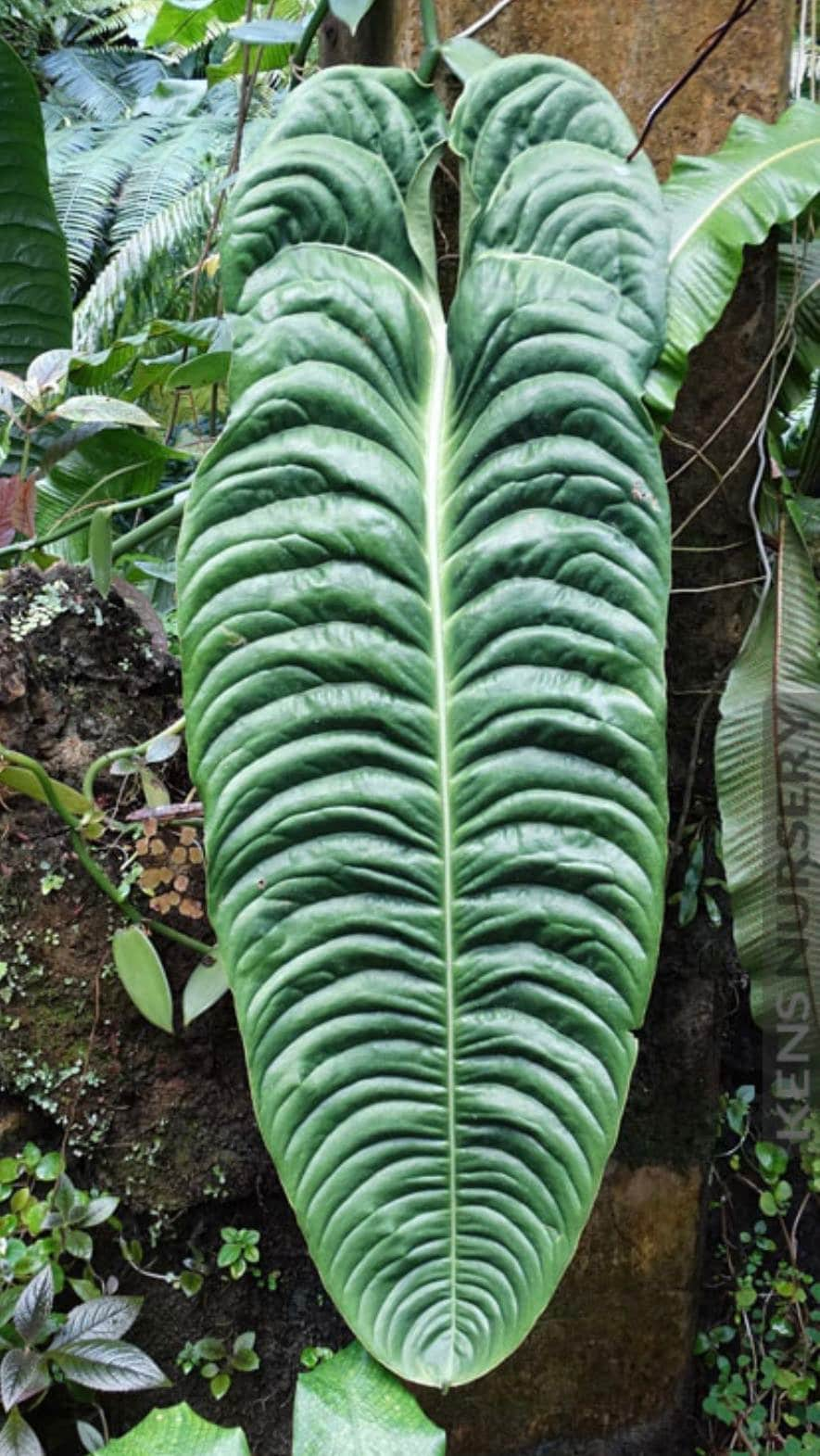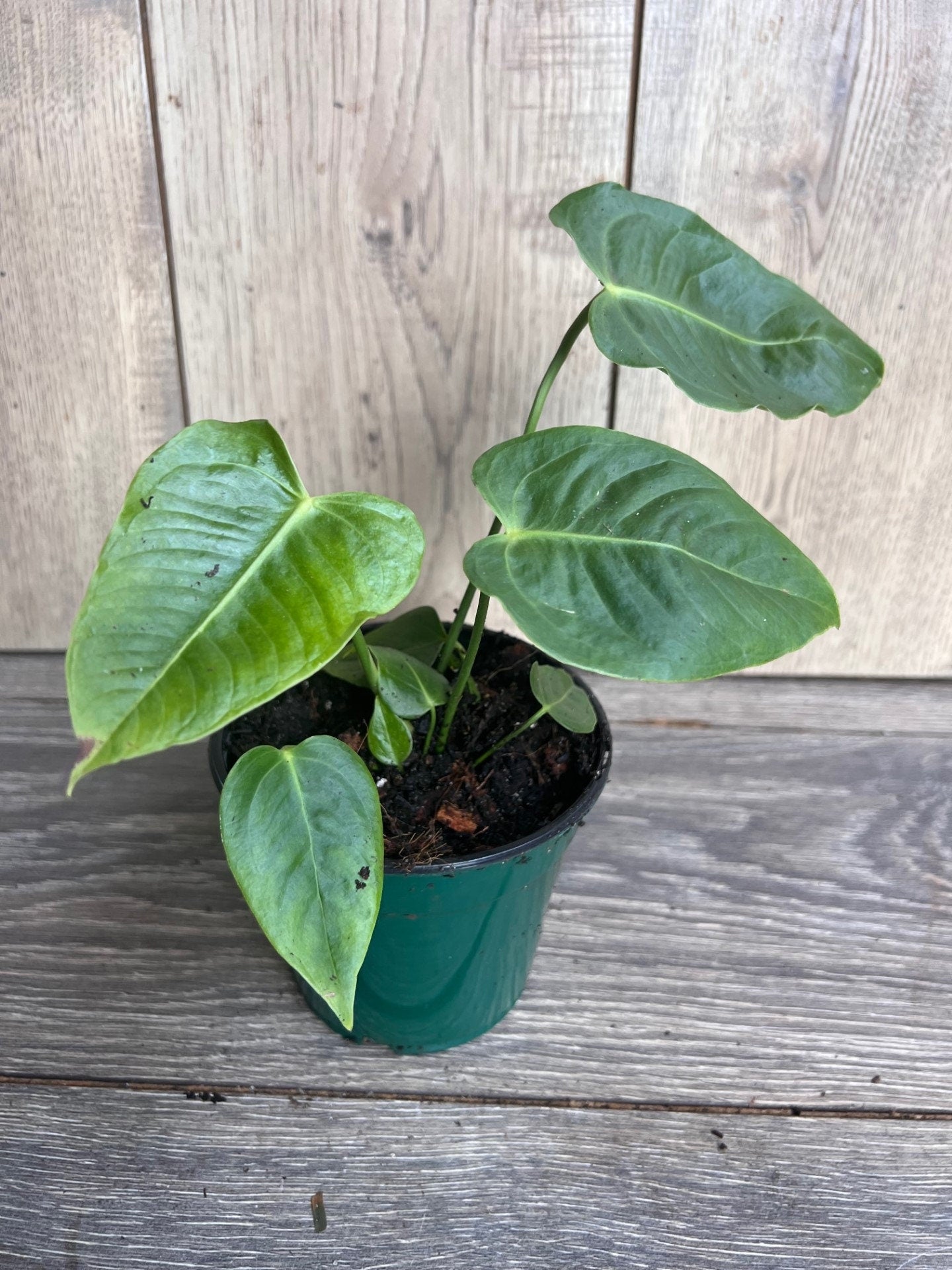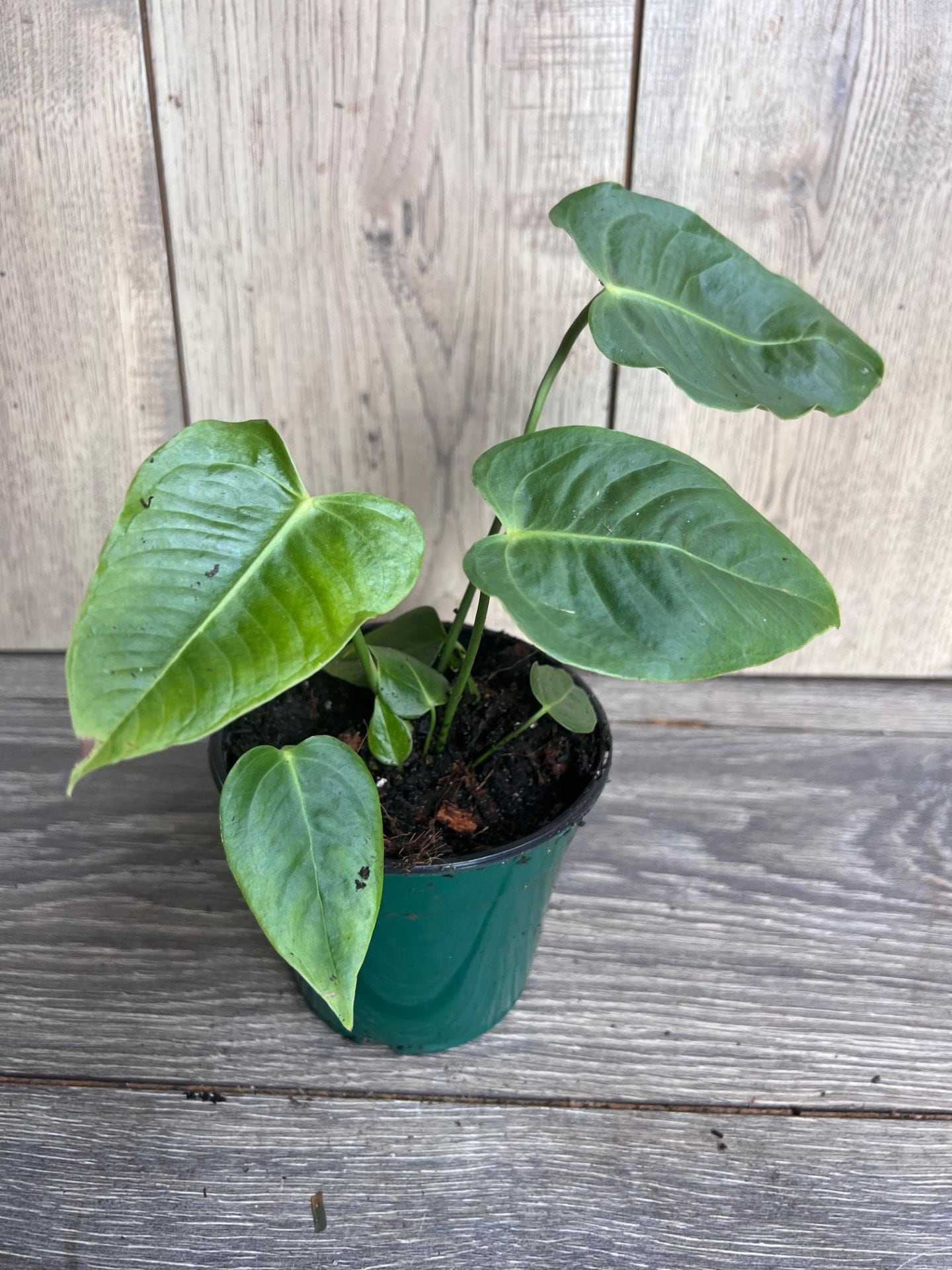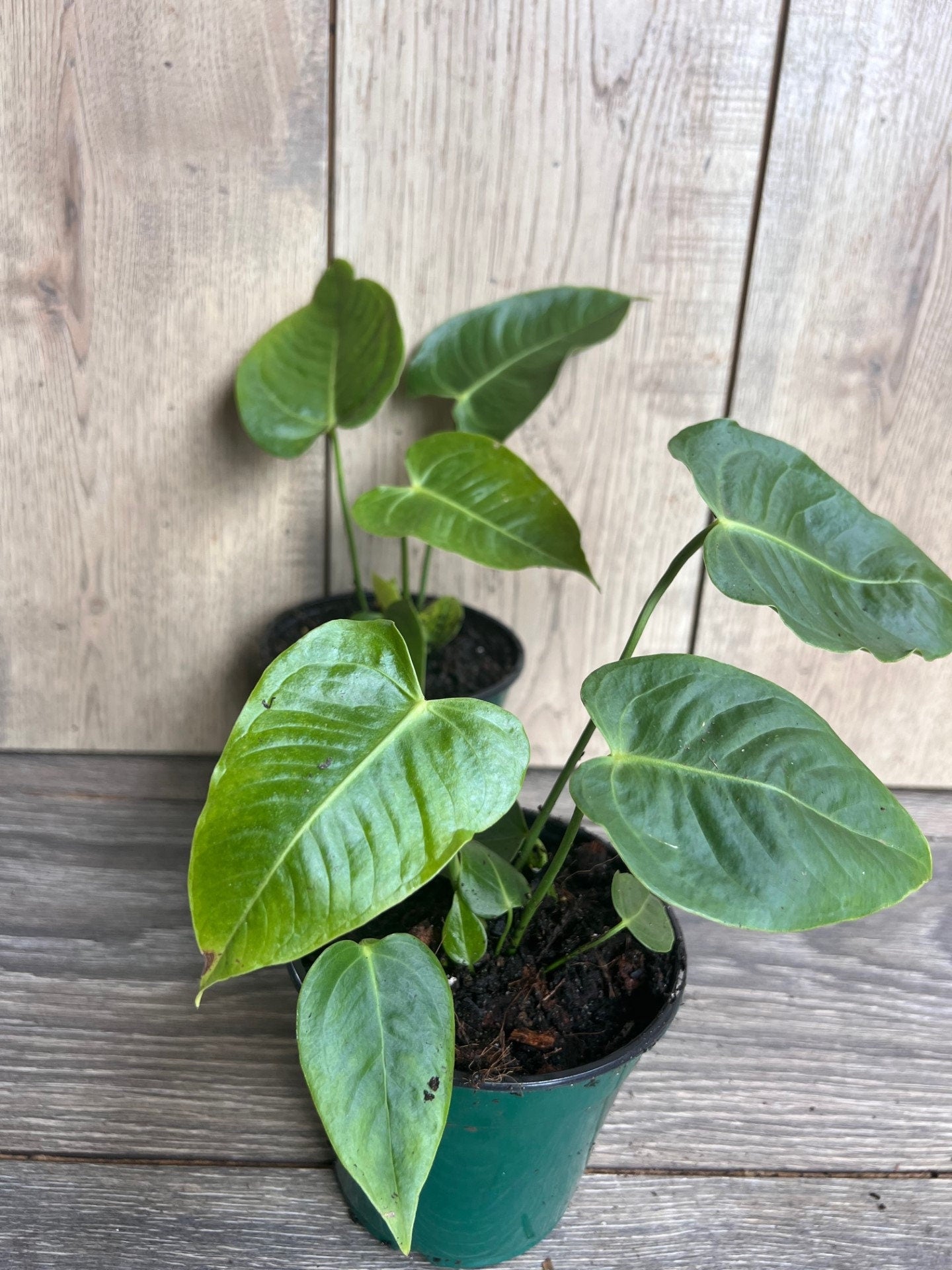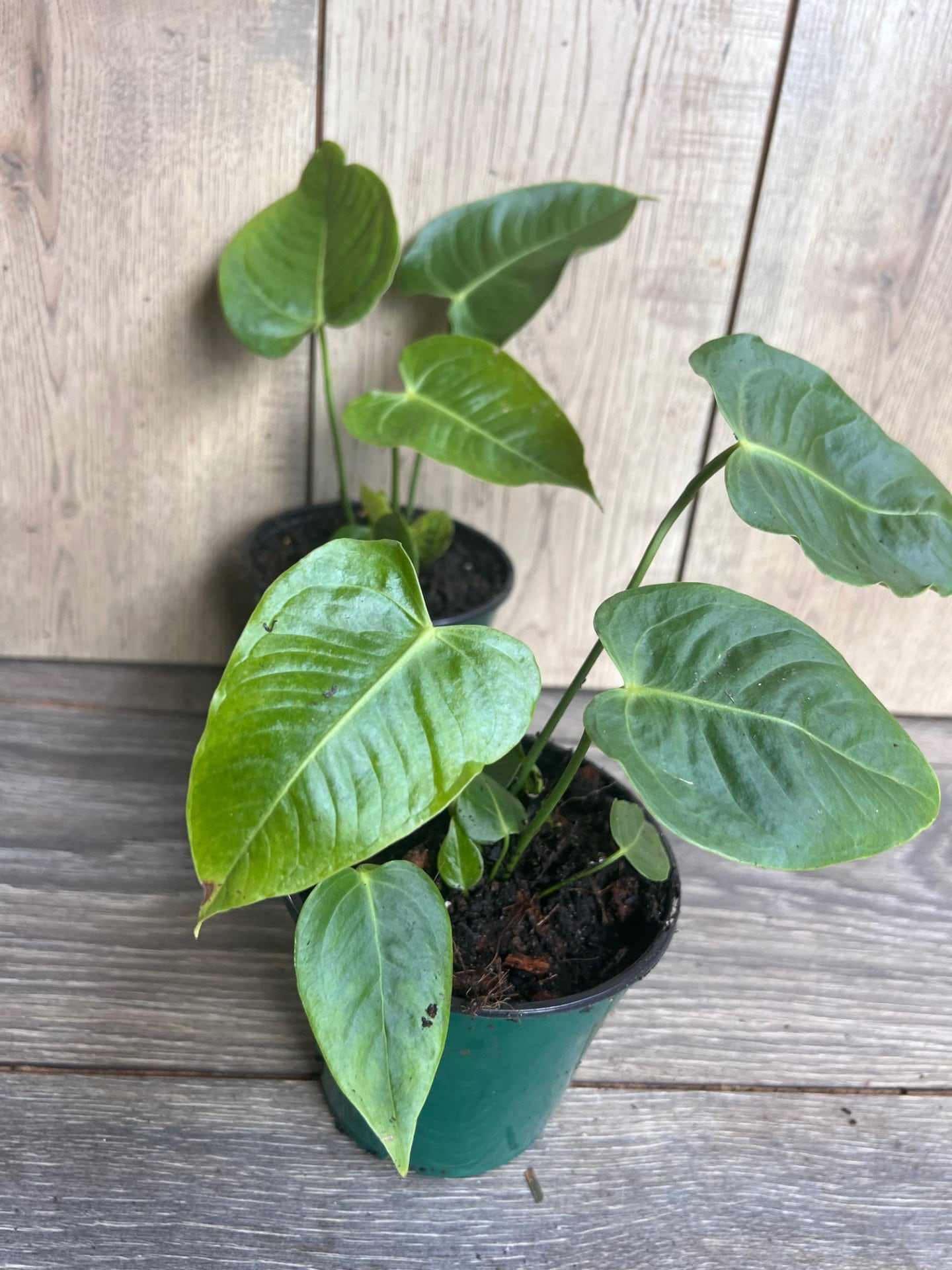Anthurium veitchii ,king anthurium-in 4" Pot
Anthurium veitchii ,king anthurium-in 4" Pot
Couldn't load pickup availability
Anthurium 'Veitchii' Care Guide
Anthurium 'Veitchii' is a striking hybrid that stands out with its large, wavy, elongated leaves, resembling tropical palms. Native to South America, it thrives in warm, humid environments and is prized for its dramatic foliage. Here’s a detailed care guide to ensure your plant remains happy and healthy.
Light Requirements
- Bright, Indirect Light: This plant thrives in bright, indirect light. Direct sunlight can scorch the leaves, causing brown spots. Filtered light through a sheer curtain works well.
- Low Light Tolerance: While it can tolerate low light, it will grow slower and may not bloom or produce vibrant foliage. For best results, aim for plenty of indirect light.
- Indoor Placement: A north or east-facing window is ideal. If placed near a south-facing window, diffuse the light using a sheer curtain.
Watering
- Consistent Moisture: Water when the top 1-2 inches of soil feel dry. However, avoid overwatering as the plant is prone to root rot. Ensure the pot has drainage holes.
- Watering Method: Water thoroughly until excess water drains from the pot. Never let the plant sit in a saucer with standing water.
- Signs of Overwatering: Yellowing leaves or a musty smell from the soil can indicate overwatering or root rot.
- Signs of Underwatering: Wilting, dry leaves, or crispy, brown edges signal underwatering. Increase watering frequency, but allow soil to dry out slightly between waterings.
Temperature
- Ideal Temperature: Anthurium 'Veitchii' prefers warm temperatures, ideally between 65°F and 80°F (18°C - 27°C). It cannot tolerate temperatures below 50°F (10°C).
- Avoid Temperature Fluctuations: Keep the plant away from drafts, air conditioners, or heaters to prevent stress.
Humidity
- High Humidity: As a tropical plant, it thrives in humidity levels around 60% or higher. Dry air, especially in winter, can stress the plant.
-
How to Increase Humidity:
- Use a humidifier near the plant.
- Place it on a humidity tray (shallow dish with pebbles and water).
- Group plants together to increase the overall humidity.
- Signs of Low Humidity: Brown, crispy edges on leaves are a common sign of inadequate humidity.
Soil
- Well-Draining Soil: A light, well-draining potting mix is ideal. Look for a mix containing peat, perlite, and bark for aeration and moisture retention.
- Repotting: Repot every 1-2 years or when the plant outgrows its pot. Choose a pot 1-2 inches larger in diameter, ensuring it has drainage holes to prevent waterlogging.
Fertilizing
- Growing Season (Spring & Summer): Feed every 4-6 weeks with a balanced liquid fertilizer (10-10-10 or 20-20-20) diluted to half strength. This encourages healthy growth.
- Winter Care: During fall and winter, when growth slows, reduce or stop fertilizing.
Pruning & Maintenance
- Pruning: Regular pruning is not usually necessary. However, remove dead or damaged leaves to maintain the plant's appearance. If it becomes leggy, trim back long stems to encourage new growth.
- Cleaning: Wipe the leaves occasionally with a damp cloth to remove dust and improve photosynthesis. Clean leaves help maintain the plant's overall health.
Flowering
- Flowers: Anthurium 'Veitchii' produces the signature spathe and spadix flowers typical of the Anthurium genus. The spathe can be white or pale green, with a long, upright spadix.
- Encouraging Blooming: To promote flowering, provide optimal care—good light, high humidity, and proper watering. Flowering is not prolific indoors but may occur with the right conditions.
Pests & Problems
-
Common Pests: While generally pest-resistant, Anthurium 'Veitchii' can occasionally attract:
- Mealybugs
- Spider mites
- Aphids
- Scale insects
-
Inspect the undersides of leaves and stems for pests regularly. Treat infestations with insecticidal soap or neem oil.
-
Root Rot: Overwatering and poor drainage can lead to root rot. Always ensure the pot has drainage holes and let the top soil dry out before watering again.
-
Leaf Spotting or Yellowing: This can be a sign of overwatering, poor drainage, or fungal infections. Avoid excessive moisture on the leaves and ensure the plant doesn’t sit in water.
With the right care, Anthurium 'Veitchii' can be a spectacular addition to your indoor garden, thriving in bright, humid environments. Keep an eye on its light, watering, and humidity needs, and you'll be rewarded with its stunning foliage.
Share
